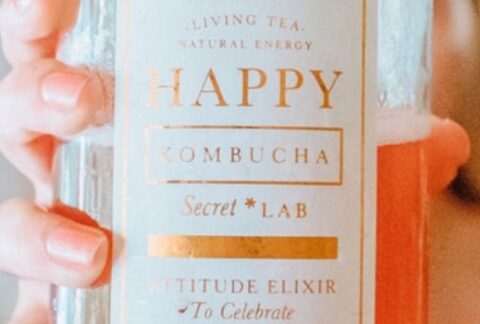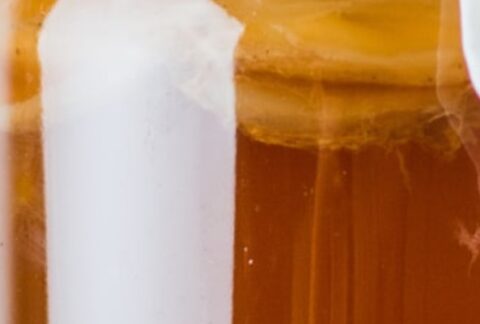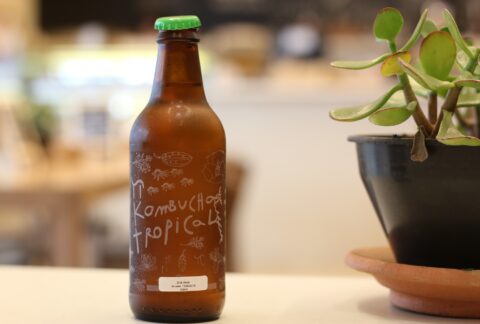Called the ‘miracle cure-all’, Kombucha has been made at home for health and vitality by many generations right around the world.
Kombucha tea is a powerful health drink, which is reported to be the answer to many health problems.
Pronounced [Com-boo-cha], It is made and drunk right around the world. It has been a ‘secret formula’ for those ‘in the know’ and a lifesaver for many a poor person in the less blessed nations.
Kombucha works with your body to boost its natural, inbuilt ability to fight sickness and disease as well as bring a healthy balance back to your metabolism and organs.
Because it has been around for so long, many researchers, chemists and others from the medical profession have spent time investigating the sometimes quite astonishing results from this natural remedy. Even the FDA (food and drug administration) have researched Kombucha, such has been the interest in it.
You have probably heard people say that “anything that is good for you tastes bad.” Well, Kombucha doesn’t fit into that category.
It is a very pleasant tasting drink, so much so, that many people use it as a drink for guests and special occasions.
Sparkling and a pleasant taste, you can even change the flavour to suit yourself.
Kombucha is made at home and really is pretty simple to make. It also doesn’t take up much of your time. I have yet to find anyone who cannot make it.
- Could you have better health?
- Need a stronger immune system?
- Want rid of sickness in your body?
- Want to ensure you stay healthy?
- Could do with more energy and vitality?
- Want better skin?
- Have you ‘tummy’ problems?
No matter how bad your situation is, you should consider if this inexpensive, easy to make health drink is for you.
You will be able to find in shops, Kombucha made by commercial producers – be careful! Many manufactures of the shop bought Kombucha have to preserve the drink to keep its shelf life – often this involves pasteurisation, which kills a lot of the health giving elements you want to keep.
Like pre-packed frozen dinner, shop-bought Kombucha isn’t as good for you as the one you make yourself.
This site should tell you all you need to know about making and drinking Kombucha.
Kombucha Tea
Have you drunk kombucha tea before and are interested to find out more or are thinking about doing so in the future – hopefully this article will be able to provide some answers to any questions you might have? First of all, what is kombucha tea exactly? Well, to be succinct, kombucha can be described as a form of tea, which has been fermented. It is claimed to have medicinal benefits, which whilst perhaps not have general modern scientific consensus can be said to have previous centuries of anecdotes of their value. Although the tea can be bought commercially, it can also be made from one’s home. The method to create this is fermentation involving yeast and bacteria, which would thus form a “kombucha culture”. The culture itself can be said to present itself as a “large pancake”.
Kombucha Tea History
So, something you might be wondering is how such an unusual beverage for modern palates might have originated. It is reported that in Russia during the 19th century, the tea had begun and was originally called “mushroom”/”tea kvass”/”kass”. There was a traditional “kvass” but that was made from different ingredients which were “water” and “stale rye bread”. The tea also has a Chinese name, which can be literally translated as “red tea mushroom” among other names. In Japanese, it is directly translated as: “black tea mushroom”. In fact, it is reported that a Korean doctor even treated the Japanese Emperor “Ingyō” in the year 415 A.D..
Kombucha Tea Safety Issues
There may be less than useful published research regarding the benefits to health of kombucha. Benefits that proponents claim are that it promotes recovery from cancer, increases one’s energy and improves the ability to see etc.. However, it is not always felt that these claims have been properly substantiated – furthermore, it might be important to have caution whilst consuming kombucha in case it interferes with medical prescriptions, one or more medical therapies and also wariness should be kept in case it causes an allergic reaction.
When preparing the kombucha yourself at home, obviously safety issues will equally or perhaps more likely be relevant, as at least in a commercial system, will be much more practised and sequenced out. Clearly, you will need a “clean environment” when creating the beverage, you will also need to maintain an appropriate temperature (which might taken more care outside of a commercial environment) and also a suitable pH level will need to be maintained. Common mold contamination might be identified as being green/blue/black in its colouring. In fact some beginner brewers might notice brown coloured “root filaments” which could be found on the underneath of the culture and think that it is a contamination by mold, which might not be the case. Of course, if mold contamination does take hold it is advised to start again with a new culture of kombucha.
Kombuch Tea Considerations
It is recommended that those who have immunity considerations should consume commercially created kombucha. When making kombucha, try to make sure that all things that it comes into contact with are well cleaned – the reason for this is to oppose contamination of the kombucha. Of note, is that kombucha may be very acidic (ph 3.0) when it is completed, so consideration should be made regarding the containers that it is kept in. Therefore, items such as lead free china might be superior.
Having noted that the correct pH level is important in home-brewing, it is useful also to realise that these same conditions of acidity may prevent mold and bacterial growth. It is recommended that the pH of kombucha should be from 2.5-4.6 – if it is less then it may be too acidic to reasonably consume while more than the recommended amount may cause contamination. You might consider testing the pH levels at the beginning and end of the brewing process to make sure that you are within the safe boundaries.
Kombucha Tea Processing
The methodology for producing kombucha is by placing the culture into sweetened tea – the reason for this is that sugars help with the fermentation process. Black tea may be quite popular – however, green tea or indeed other flavours could be used. As noted already in the article, it is important to prevent contamination and therefore it would be useful to cover the concoction with a “porous” cloth to stop contamination from the air – at the same time it will allow gas to transfer through the covering.
The fermentation process could possibly take 1 or 2 weeks – at this point the liquid can be gleaned whilst some can be left to repeat the process. Moreover, the “mother” culture can be used to create a new “daughter” culture for furthering the operation. In addition to the liquid form of kombucha some tea manufacturers also offer “dried” kombucha combined with tea leaves which can be subsequently dissolved in hot water – this form is much more unusual than the regular form of kombucha as discussed.



